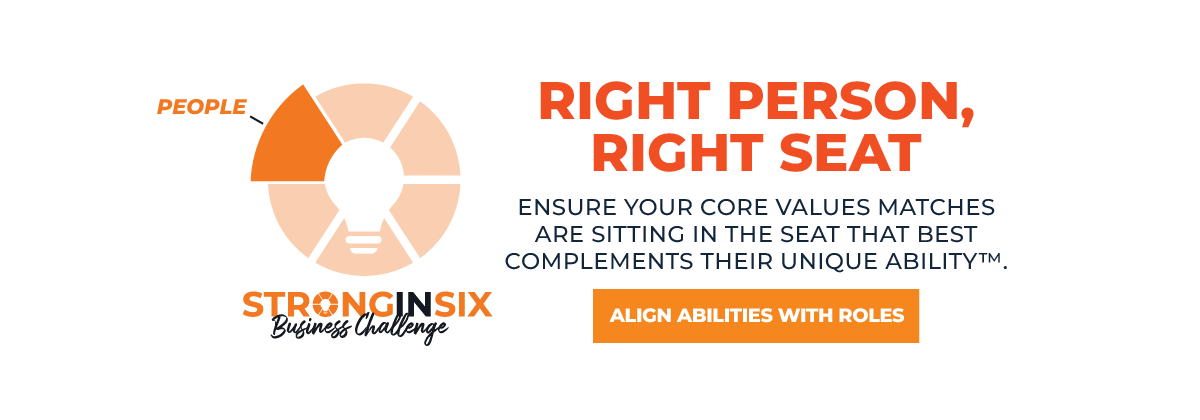
So, you found the Batman to your Robin, the Thelma to your Louise, the Integrator™ to your Visionary (or Visionary to your Integrator). Now how do you keep that relationship strong? To master the most important relationships in your business, start by understanding all three parts of each other’s minds. The best place to start? With yourself.
Understand Your Strengths – In all Three Parts of the Mind
“Know thyself” isn’t new advice. This time-tested wisdom dates back to at least classical Greece. Unfortunately, this can feel like a big, vague challenge. Where do you start?
How about we tap into some more Greek wisdom, this time from a pretty smart guy named Plato? Plato identified, and philosophers have since agreed, three parts of the mind:
- Cognitive (thinking)
- Affective (feeling)
- Conative (doing)
Understanding these parts of your mind will take you a long way toward understanding yourself.
The cognitive area of your mind covers things like intelligence, knowledge, skills, and experience. Knowing what cognitive strengths you bring to the table helps you zero in on what you’re good at and what you need to learn.
Your affective strengths (often known as your personality) lie in your ability to utilize your emotions, values, and preferences. Fortunately, many personality-type assessments (Myers-Briggs, CliftonStrengths, etc.) can help you better understand your affective strengths and their role in your life.
The third part of the mind, conation, is not as well known as the other two but is just as critical.
The Third Part of the Mind: Conation
Conation concerns your natural method of operation – how you take action when given the freedom to be yourself. The Kolbe Theory identifies Four Action Modes®:
1. Fact Finder
The instinctive way we gather and share information
2. Follow Thru
The instinctive way we organize and design systems
3. Quick Start
The instinctive way we deal with risk and uncertainty
4. Implementor
The instinctive way we handle space and tangibles
Everybody has conative strengths. The key is knowing them and setting yourself and your business up for success by being in a role where you use them. When you start embracing how you naturally get things done, you’ll increase productivity, gain energy, and reduce stress.
Understanding this third part of your mind is a hidden key to improving your relationship with yourself, others, and the world around you. You can discover your conative strengths by taking the Kolbe A™ Index.
Identify and Optimize the Strengths of Others
Once you’ve got a better understanding of your strengths in all three parts of the mind, you can get more out of all your relationships.
In terms of EOS®, that may mean the relationship between a Visionary and an Integrator™, among partners, or even with your assistant. In all those examples, the same principle applies: The better you understand how all three parts of their mind work, the easier you can collaborate effectively.
In particular, having a deeper understanding of someone’s conative strengths ensures you maximize your creative output and minimize your conflict.
The Best Collaboration You’ve Ever Had
Here’s the great news: Whether you and someone else have similar or completely different conative strengths, you can work together successfully.
If you are very similar in one of the four Action Modes, you may have a natural ease in working together. And you’ll know not to waste too much time replicating each other’s strengths. For example, two people who naturally brainstorm can brainstorm together for a LONG time. Still, if they’re fully aware of these similarities, they can efficiently support each other when experimenting, innovating, and driving change.
If you’re kind of similar, great! You may complement each other well as you’ll instinctively facilitate each other’s strengths.
And if you’re far apart, you’ll know to prioritize collaboration over conflict. Understanding how the other person solves problems is generally more than enough to avoid interpersonal conative conflict. Plus, the diversity of strengths you collectively bring to the table will allow you to flourish.
Your Path to Productive Relationships
Whether you’re at the beginning of a beautiful partnership or have already formed a dynamic duo with someone in your business, the key to collaboration and lasting success is to understand yourself, identify the strengths of the people around you, then fight to make sure everybody is in a role where they have the freedom to be themselves.






